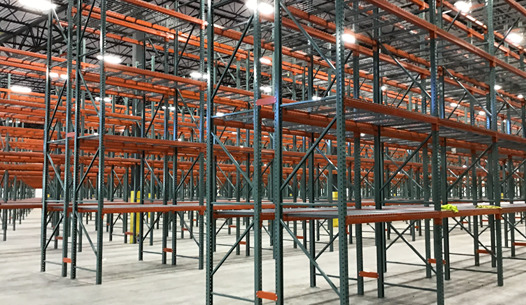Selective Rack Design

Selective Rack Definition
Selective racking is a single-deep pallet racking structure that allows access to any pallet in the racking system without moving another pallet. Selective pallet racking accommodates a wide variety of products, weights, and sizes and is easy to install and reconfigure. Today, selective pallet racking is one of the most common types of warehouse racking in most parts of the world.
Factors to Consider When Choosing Selective Racking
The primary factor in selecting selective racking is the number of SKUs compared to the number of pallets actually stored. The greater the number of stock keeping units (SKUs) a business has, the more important selective racking becomes.
Advantages of Selective Racking
In warehouses that store a large number of different products, each of which requires regular access, selectivity is a crucial storage system feature. With single-deep selective racking, any pallet in the warehouse can be accessed at any time without moving any other items.
Another major advantage of selective racking is its low management cost. Selective pallet racking is considered the most economical type of warehouse racking in terms of the additional storage space gained by the end user through racking installation.
Selective Racking Design
1.Determine the pallet size
1.Add the pallet's depth and width to the depth, width, and height of the load on top of the pallet.
2.Determine the required depth of the pallet rack uprights
Take the depth of the load you intend to store, calculated in step 1, and add 3 inches on each side. Allow for a slight overhang on each side.
3.Determine the crossbar width and maximum load capacity
When calculating the required rack crossbar width, allow for some space between the rack uprights and the pallets. A 5-inch gap between pallets is recommended to allow forklift operators ample room to maneuver when moving products in and out of the racking system. This reduces rack damage to pallets and improves operator efficiency.
The maximum crossbar capacity can be calculated by multiplying the weight of each pallet by the number of pallets you intend to store on each rack.
4.Calculate the upright height and required load capacity
When determining the rack upright height, ensure that forklift operators have enough space to unload the load and clear any obstacles, such as the ceiling or other potential obstructions.
Do you need more information?
Our team of experts will be happy to help you with any questions you may have.
More information